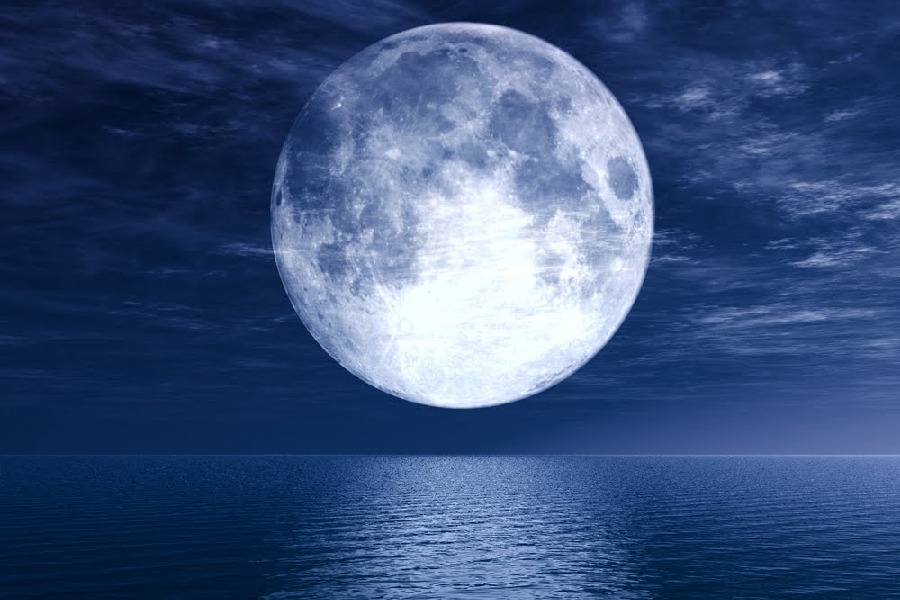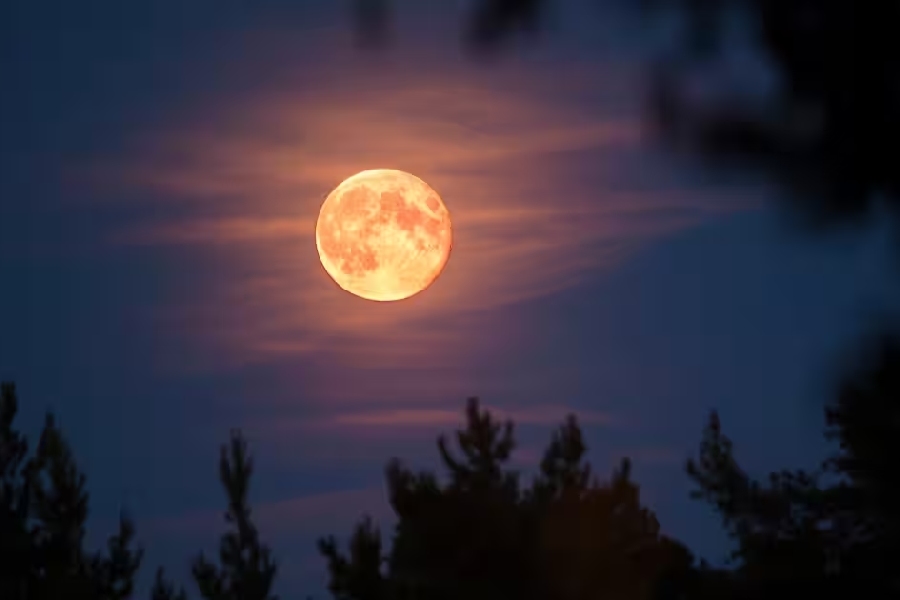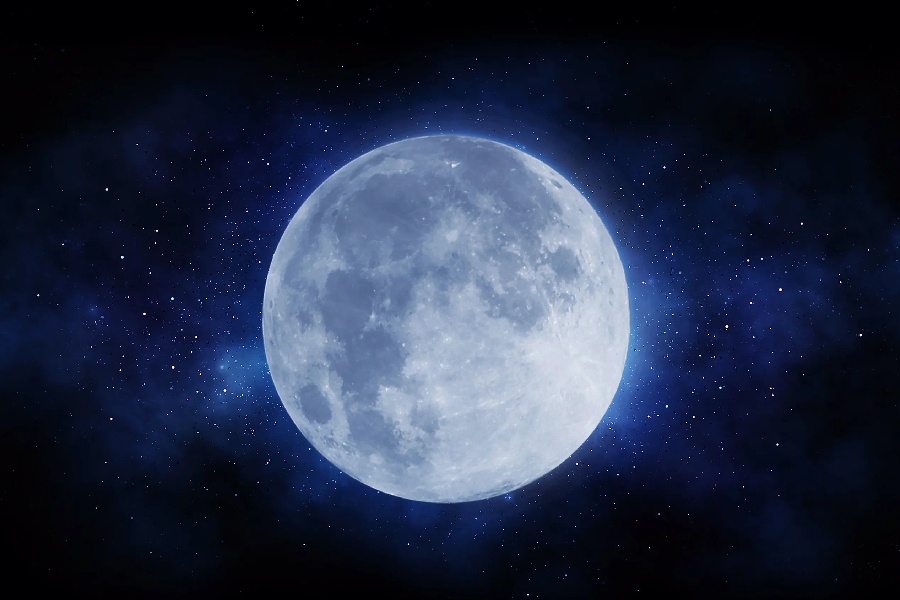Have you ever gazed up at the night sky right after sunset and struggled to spot the newest crescent sliver of a moon? This experience raises the question – can you see a new moon? In the following article, we’ll explore the science and phases of the lunar cycle to unravel the mystery of new moons and their visibility.
We’ll begin by defining precisely what a new moon is and when it occurs in the Moon’s orbit around Earth. Understanding the geometry and positioning of the Sun, Earth, and Moon during a new moon is key to unveil the mystery of this phase.
Finally, we’ll address the intriguing question of new moon visibility and whether the moon is ever completely invisible to us here on Earth. By understanding the moon’s orbital rhythm and phases, you’ll discover when and how a new moon can be seen or why it may seem to disappear from sight.

Can You See a New Moon?
So, can you see a new moon? No, you cannot see a new moon. A new moon occurs when the moon is positioned between the Earth and the Sun, so its illuminated side faces away from us.
This means that the side of the moon facing Earth is in shadow and not visible from our perspective on Earth. As a result, the new moon appears dark and cannot be seen with the naked eye.
Visibility of the new moon
A new moon occurs when the moon is directly between the Earth and the Sun. With the Sun-facing side completely unilluminated, new moons may seem impossible to see. But under certain conditions, the new moon becomes faintly visible.
The new moon can only be seen briefly at certain optimal times. The determining factors include the moon’s position relative to the Sun, the time of day, and viewing conditions. We will examine how these conditions allow glimpses of the elusive new moon. Can you see a new moon at night? Let’s find out.
Factors Affecting Visibility
Seeing the new moon depends on several key factors. These include the timing, weather conditions, location, and atmospheric conditions present. We will examine how each of these elements impacts the visibility of the new moon.
Optimal alignment of the Moon’s positioning coupled with ideal environmental conditions is required to glimpse the slim crescent of a new moon. Understanding these factors allows you to know when and where you may be able to observe this elusive lunar phase.
How time of day affects new moon visibility
The new moon is only briefly visible each month around sunset or sunrise. During these time periods, the moon sits very close to the horizon.
When the moon is low on the horizon, sunlight can refract through Earth’s atmosphere at just the right angle to illuminate the moon’s slender crescent. This allows it to be visible for a short window of time.
At any other time of day or night, the geometry of the Sun, Earth, and Moon will not align correctly to light up the new moon for observers on Earth. Early morning and early evening provide the only potential viewing opportunities.
Role of weather in determining new moon observability
Ideal weather conditions for spotting the new moon are clear, cloudless skies. Any amount of cloud cover, fog, haze, or precipitation will obstruct visibility and completely hide the thin crescent from view.
Even partly cloudy skies make seeing the new moon challenging at best, if not impossible. Overcast weather likewise obscures the view of the Moon entirely, regardless of the Moon phase.
For the best chances to glimpse the new moon, you need a crystal clear sky free of any weather obstructions in your area. This ensures an unobstructed line of sight to the moon near the horizon.
How hemisphere affects new moon visibility
The visibility of a new moon depends on an observer’s hemisphere, as the Moon’s orientation to the Sun differs between north and south. During a new moon, the lunar disk faces away from Earth, seeming to disappear. It rises and sets with the Sun.
Observers in the north see the new moon near the setting Sun, making it hard to spot in twilight. In the south, it is near the rising Sun, easier to glimpse in the darker morning sky. The optimal location is near the equator, where the ecliptic climbs steeply from the horizon.
Influence of atmosphere on new moon visibility
The clarity of the atmosphere greatly impacts spotting a new moon’s slim crescent. Ideal conditions feature minimal haze, humidity, pollution, or clouds near the horizon. Turbulence can distort the thin crescent.
Even minor obstructions like haze or city lights can prevent seeing the crescent. The best conditions are clear, dry skies in remote areas at high elevations. This reduces the atmosphere sunlight passes through.
Timing is also key. The best chances come soon after sunset or before sunrise when the new moon remains close to the Sun in the sky. Clear midnight skies cannot reveal a Moon far from the horizon.

Where to Look for a New Moon
The location of the new moon in the sky depends on the time of day. Observers must know where to look on the horizon to spot its first visibility.
Spotting the new moon on the western horizon
The day after a new moon conjunction, look low on the western horizon right after sunset. The thin crescent will be setting just after the Sun. It will be a challenging sighting with twilight still lighting the sky. Use binoculars to scan for the Moon near the brighter planets Venus or Mercury.
The exact timing is important. Calculate when the Sun will reach 6-10 degrees below the horizon and start looking just before that time. Making note of the precise sunset time for your location will aid in timing your observation.
New Moon visibility on the eastern horizon
In the days following conjunction, look low on the eastern horizon right before sunrise. As the Moon waxes into a thicker crescent, it rises progressively earlier each day.
Find a clear, unobstructed sightline over the horizon to catch the first glimpse of the emerging crescent Moon. Arrive early to allow time for your eyes to adjust to the darkness.
Plan your observation session to end no later than 20 minutes before sunrise. After the Sun breaks the horizon, its bright light will overwhelm the faint crescent even if it has risen.
How to Spot a New Moon
Offering practical tips on identifying the new moon
Use a skywatching app or calendar to know the exact day and time of the conjunction. Scan the horizon with binoculars in the hours just before or after that time. Look near where the Sun recently set or is about to rise. The crescent will appear as a thin sliver of light on the darkened portion of the Moon.
It may be very hard to spot without optical aids. Be patient and allow time for your eyes to fully adapt to the darkness. Try sighting along the ecliptic – the path the Sun takes through the sky – the new moon will appear very close to the Sun’s position.
Calendar month and lunar calendar
While a calendar month from one New Moon to the next averages 29.5 days, there are variations. The new moon may not align with the 1st of a calendar month. Check a moon phase calendar to determine exact conjunction dates.
Some lunar calendars directly track the days between new moons as a “lunation”. Staying aware of lunar cycles aids in moonspotting. Note if any lunar eclipses are upcoming, as these only occur at new moon alignments.

Conclusion
We have learned that spotting the new moon’s slim crescent presents an enticing challenge for skywatchers. Can you see a new moon?
While the Moon remains invisible at the precise moment it passes between Earth and Sun, patient observers willing to scan the horizon at just the right time can be rewarded with a faint glimpse.
We hope this guide has shed light on when and where you can see a new moon, as well as how atmospheric conditions and your location’s hemisphere impact visibility. Equipped with knowledge of the Moon’s phases and behavior, you now feel confident in knowing what to look for.
You have also learned how to maximize your chances of experiencing the thrill of spying a young new moon cresting the horizon. This achievement will deepen your appreciation for the celestial rhythms unfolding eternally above us all.
